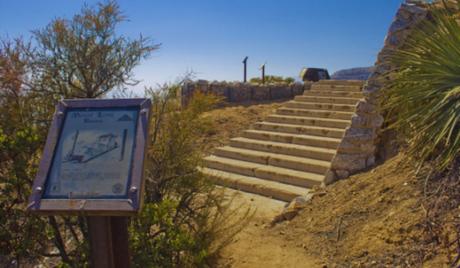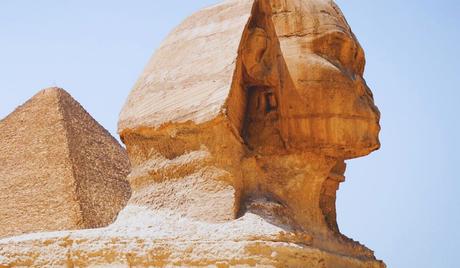Explore the profound connection between heritage and tourism in this insightful article. Discover the impact, significance, and intricate dance of history and exploration. How are heritage and tourism related? Find out now!
Embarking on a journey through the intertwined realms of heritage and tourism is like delving into a captivating narrative that spans across time and geography. In this article, we unravel the symbiotic relationship between heritage and tourism, exploring 15 compelling aspects that showcase their deep connection.
How Are Heritage and Tourism Related
Heritage and Tourism: An Intricate Tapestry
Embarking on the exploration of the seamless integration of heritage and tourism, one must first understand the intrinsic connection between the two. Heritage serves as the anchor, grounding travelers in the rich tapestry of history. At the same time, tourism becomes the vessel that carries individuals through time, allowing them to witness and participate in the unfolding stories.
Navigating Cultural Narratives
The Cultural Immersion Experience
As travelers embark on a journey, heritage becomes the narrative that guides their path. Exploring ancient artifacts, historical landmarks, and cultural traditions offers a profound sense of connection to the past. This immersive experience is the heart of tourism, intertwining the modern traveler with the historical roots of a destination.
Architecture as a Time Capsule
Preserving History Through Architectural Wonders
Architectural marvels stand as silent witnesses to the passage of time. Tourism breathes life into these structures, providing a tangible connection to history. Exploring heritage sites not only educates but also instills a sense of awe and admiration for the craftsmanship of bygone eras.
Festivals and Celebrations
Reviving Traditions Through Festivals
Festivals deeply rooted in heritage showcase the vibrant cultural tapestry of a region. Tourism, in turn, transforms these celebrations into global spectacles, attracting individuals from diverse backgrounds. The fusion of heritage and tourism during festivals creates a unique and unforgettable experience for participants.
Read more: The Tech Bringing to Cover CES 2024
Culinary Expeditions
Tasting History: Culinary Tourism
One of the most delectable aspects of heritage tourism is the exploration of culinary traditions. Local cuisines tell tales of cultural evolution and historical influences. A food journey becomes a sensory exploration, allowing tourists to savor the flavors of history.
Environmental Stewardship
Heritage Preservation and Sustainable Tourism
A critical aspect of the relationship between heritage and tourism lies in sustainable practices. As tourists explore historical sites, there is a shared responsibility to preserve and protect these treasures for future generations. Sustainable tourism ensures that the footprints left behind are positive and minimal.
Art as a Cultural Expression
The Canvas of Heritage: Art and Creativity
Art, in its various forms, encapsulates the spirit of a culture. Museums and galleries serve as gateways to heritage, displaying the artistic evolution of societies. Tourism amplifies this expression by making art accessible to a global audience, fostering cross-cultural appreciation.

Indigenous Wisdom and Eco-Tourism
Connecting with Indigenous Knowledge
Heritage and tourism intersect profoundly in regions inhabited by indigenous communities. Eco-tourism initiatives create avenues for travelers to engage with indigenous wisdom, promoting cultural exchange while supporting the preservation of natural habitats.
Religious Pilgrimages
Spirituality and Tourism
Religious heritage sites draw pilgrims and tourists alike. The spiritual significance of these locations makes them integral to cultural exploration. Tourism facilitates the pilgrimage experience, allowing individuals to connect with their faith while navigating historical narratives.
Interactive Museums
Modernizing Heritage: Interactive Museum Experiences
Museums, evolving from traditional repositories to interactive experiences, bridge the gap between heritage and tourism. Technological advancements enhance visitor engagement, making historical narratives more accessible and captivating for diverse audiences.
Historical Trails and Routes
Tracing History: Heritage Trails
Heritage trails and routes offer a literal journey through time. Tourism transforms these paths into immersive adventures, enabling travelers to follow in the footsteps of historical figures. The collaborative harmony between heritage and tourism turns these trails into living history lessons.

Impact on Local Economies
Economic Empowerment Through Tourism
The economic impact of tourism on local communities cannot be overstated. Heritage sites, through tourism, become economic engines, providing livelihoods and fostering community development. The preservation of heritage becomes intertwined with sustainable economic practices.
Read more: Natural Wonders of the USA
Virtual Tourism
Beyond Borders: Virtual Heritage Exploration
In the digital age, virtual tourism breaks barriers, allowing individuals to explore heritage from the comfort of their homes. This technological evolution broadens the reach of heritage, making it accessible to a global audience.
Cultural Exchange Programs
Bridging Cultures Through Exchange
Cultural exchange programs, facilitated by tourism, create opportunities for people to immerse themselves in the heritage of foreign lands. These experiences foster understanding, tolerance, and appreciation for diverse cultures, strengthening global unity.
The Challenges of Over-Tourism
Balancing Act: Heritage Conservation vs. Over-Tourism
While tourism contributes significantly to heritage preservation, over-tourism poses challenges. Striking a balance between attracting visitors and safeguarding heritage sites is crucial to ensuring a sustainable and harmonious relationship.
The interplay between heritage and tourism is a delicate dance that weaves together the past, present, and future. As tourists traverse landscapes rich in history, they become custodians of heritage, ensuring its continuity. The relationship is reciprocal, with heritage providing the substance that makes tourism meaningful and tourism becoming the vessel that propels heritage into the forefront of global exploration.
Heritage and Tourism: A Symbiotic Dance Through Time
Think of a fabric that is made up of threads of history, culture, and the thrill of finding. That’s the essence of the relationship between heritage and tourism. It’s a dynamic interplay where ancient whispers brush shoulders with modern footsteps, and the echoes of the past mingle with the laughter of the present.

Heritage, The Beating Heart
Heritage is the treasure chest of a place, holding its stories, traditions, and artifacts. It includes the grand structures that remind us of times gone by, the joyful events that fill the streets with color, and the traditional recipes that make us nostalgic about the tastes of the past. It’s the living legacy that connects generations, whispering tales of triumphs and tribulations, of resilience and creativity.
Tourism, The Curious Wanderer
Tourism is the insatiable explorer, forever seeking new experiences and perspectives. It’s the engine that drives people beyond their familiar horizons, propelling them towards the unknown. Tourists become temporary storytellers, weaving their narratives into the tapestry of a place’s heritage. They marvel at the architectural wonders, savor the local delicacies, and immerse themselves in the vibrant cultural tapestry.
The Symbiotic Dance
This isn’t a one-sided waltz. Heritage and tourism dance hand in hand, each enriching the other. Tourism breathes life into heritage sites, generating revenue for preservation and restoration. It shines a spotlight on hidden gems, bringing forgotten traditions back to the forefront. Tourists become ambassadors, carrying the stories and flavors of a place back to their corners of the world.
Challenges in the Choreography
However, this beautiful dance has its missteps. Unmanaged tourism can overwhelm fragile ecosystems and cultural practices. Mass tourism can lead to homogenization, diluting the unique character of a place. The key lies in finding a sustainable balance, ensuring that tourism enhances heritage without eroding its essence.
Ultimately, the magic lies in the human connection. When tourists engage with local communities, learn their stories, and participate in their traditions, the experience transcends mere sightseeing. It becomes a bridge of understanding, fostering mutual respect and appreciation.
Future of Heritage and Tourism
A Tapestry for the Future
As we move forward, let’s remember that heritage and tourism are not just industries but more like threads that hold our humanity together. By cherishing the past, embracing the present, and ensuring a responsible future, we can continue to create a tapestry rich in cultural vibrancy, historical significance, and the echoes of countless stories waiting to be told.
So, the next time you embark on a journey, remember that you’re not just a tourist; you’re a participant in this grand dance of heritage and tourism. Be a mindful traveler, one who appreciates the whispers of the past while leaving footprints of respect and understanding for the future.
Technological Marvels Unleashed
In the not-so-distant future, the landscape of heritage and tourism will be reshaped by the infusion of cutting-edge technologies. The way people visit historical places will be completely changed by Augmented Reality (AR) and Virtual Reality (VR). Augmented Reality will offer on-the-spot historical overlays, providing real-time glimpses into the past as visitors stand amidst ancient ruins. On the other hand, virtual Reality will let people go on realistic tours of historical sites from the comfort of their own homes, connecting real-world and digital exploring.
Sustainable Practices: Preserving the Tapestry of Time
Environmental consciousness will be the cornerstone of future heritage and tourism endeavors. Sustainable tourism practices will take center stage, ensuring that the footprints left by travelers are light and eco-friendly. From carbon-neutral travel options to zero-waste policies at heritage sites, the future promises a harmonious coexistence between exploration and conservation. This shift towards sustainable practices not only safeguards the delicate ecosystems surrounding heritage sites but also fosters a sense of responsibility among global travelers.
Community-Centric Evolution
As we step into the future, the relationship between heritage and tourism will become more community-centric. Local communities will actively shape the tourist experience, offering authentic insights into their cultural heritage. This evolution moves away from mass tourism models, focusing instead on creating meaningful interactions between visitors and communities. The emphasis on community involvement ensures that tourism becomes a catalyst for positive change, empowering local economies and preserving the authenticity of heritage sites.
In summary, the future of heritage and tourism is a captivating journey into a realm where technology, sustainability, and community engagement converge to redefine the way we explore and appreciate the treasures of our shared past.
Together, let’s weave a tapestry that celebrates the beauty of our shared heritage, one adventure at a time.
Frequently Asked Questions
Q: Can tourism have a negative impact on heritage sites?
Tourism, when unregulated, can indeed have adverse effects on heritage sites. Overcrowding, pollution, and improper management can lead to degradation. Sustainable tourism practices are essential to mitigate these risks.
Q: How can individuals contribute to heritage conservation during their travels?
Travelers can contribute by respecting local customs, following designated paths, and supporting sustainable tourism initiatives. Additionally, participating in community-led conservation efforts and being mindful of one’s environmental impact can make a positive difference.
Q: Is virtual tourism a viable alternative to physical travel for experiencing heritage?
Virtual tourism offers a unique and accessible way to experience heritage, especially for those unable to travel physically. While it cannot replace the sensory richness of on-site exploration, it provides a valuable supplement to traditional tourism.
Q: What role do governments play in balancing tourism and heritage preservation?
Governments are very important when it comes to making and following rules that balance historical preservation with tourists. This includes managing visitor numbers, investing in conservation efforts, and promoting sustainable tourism practices.
Q: Are there any downsides to cultural exchange programs in the context of heritage and tourism?
While cultural exchange programs are generally beneficial, there can be challenges, such as the potential for cultural appropriation or misunderstanding. It is essential to approach such programs with respect, sensitivity, and a genuine desire to learn and share.
Q: How does heritage tourism contribute to the global economy?
Heritage tourism stimulates economic growth by attracting visitors, creating jobs, and fostering local businesses. The expenditure on accommodations, dining, and souvenirs contributes to the overall economic development of the regions hosting heritage sites.
Conclusion
The collaborative harmony between heritage and tourism is a dynamic force that shapes our understanding of the world. As we engage in explorations that transcend time and borders, let us embrace the responsibility of preserving and celebrating the rich tapestry of heritage. We don’t just watch how history and tourism are deeply connected when we practice mindful tourism; we become active players in it.
